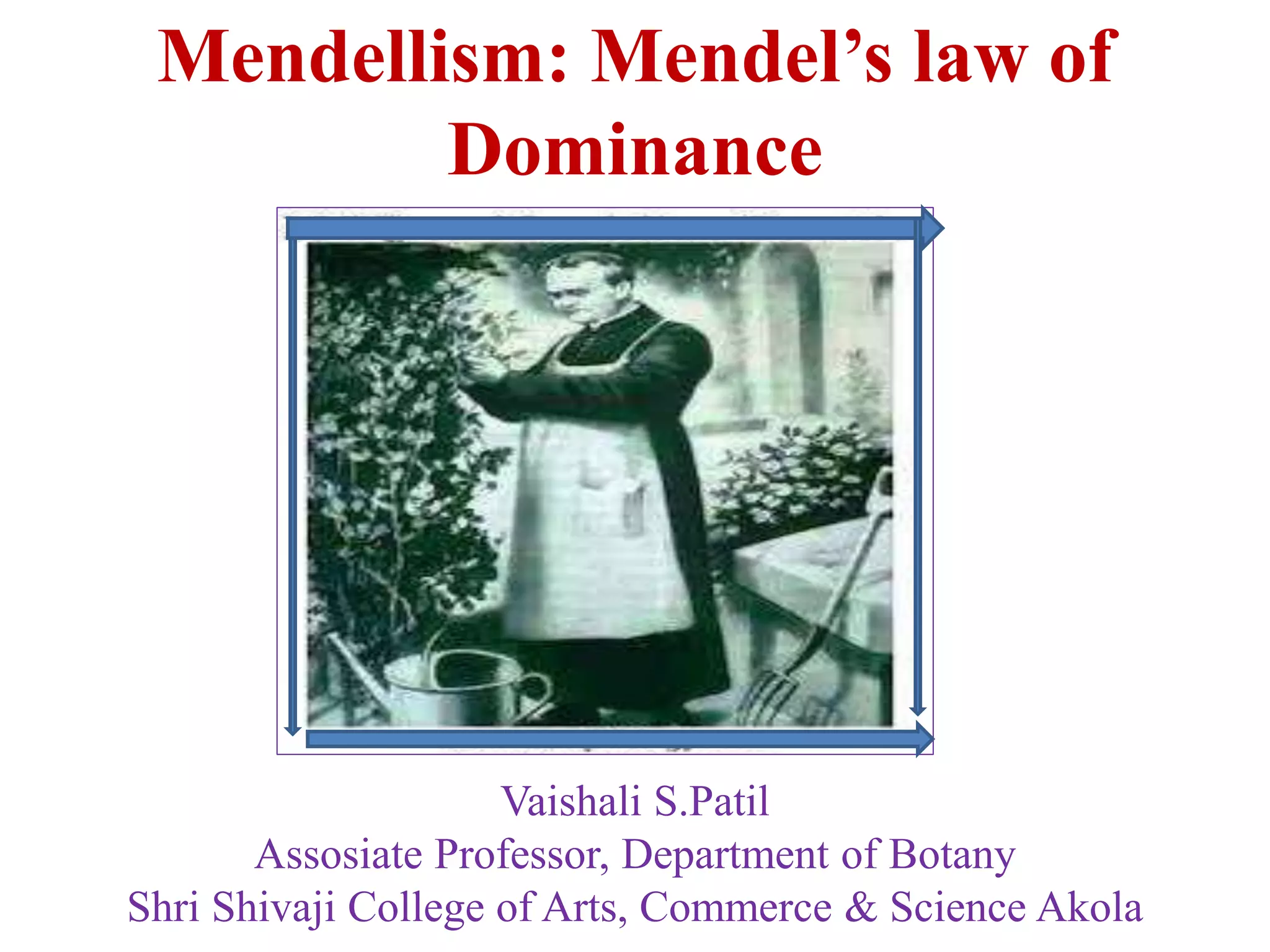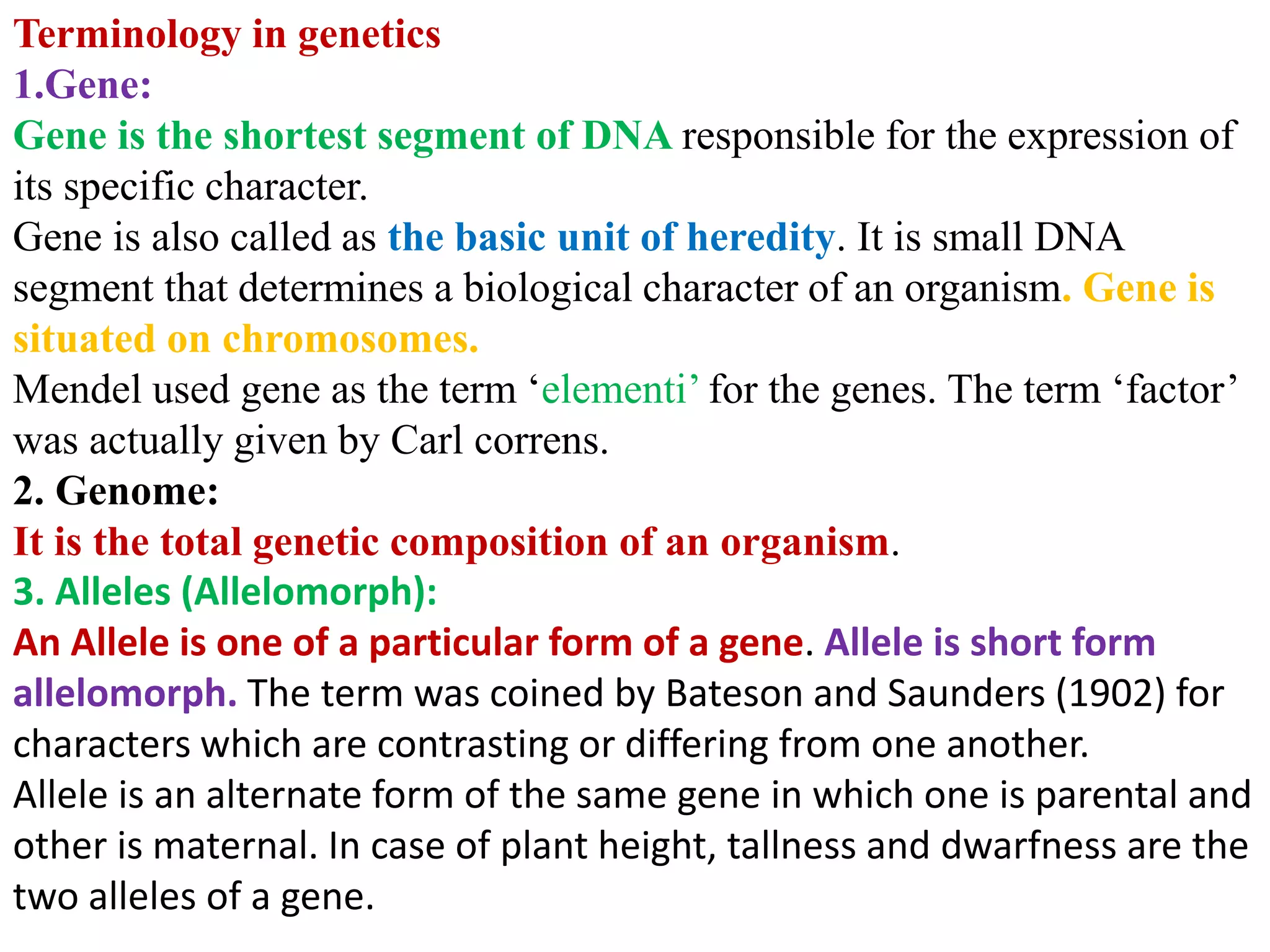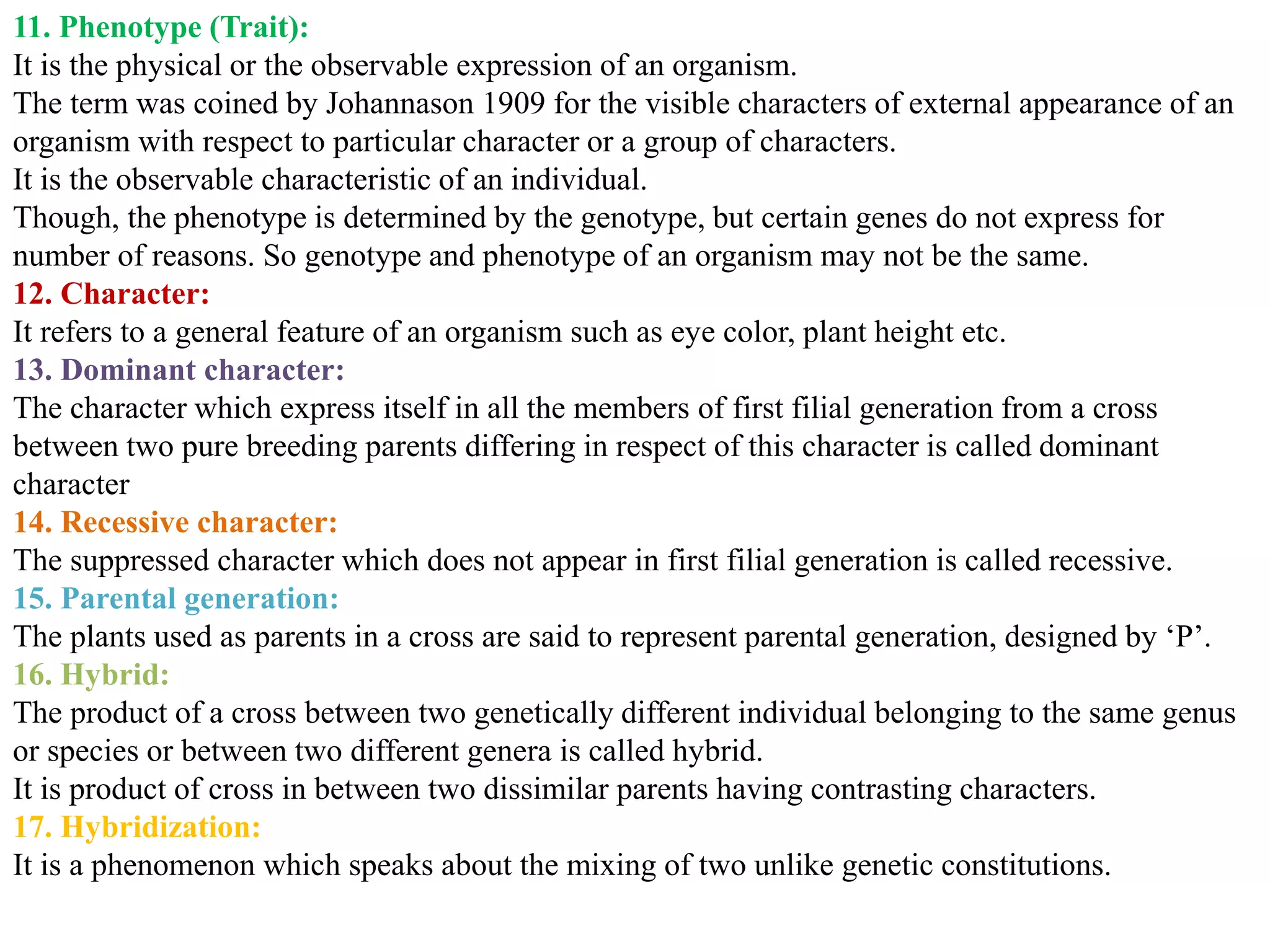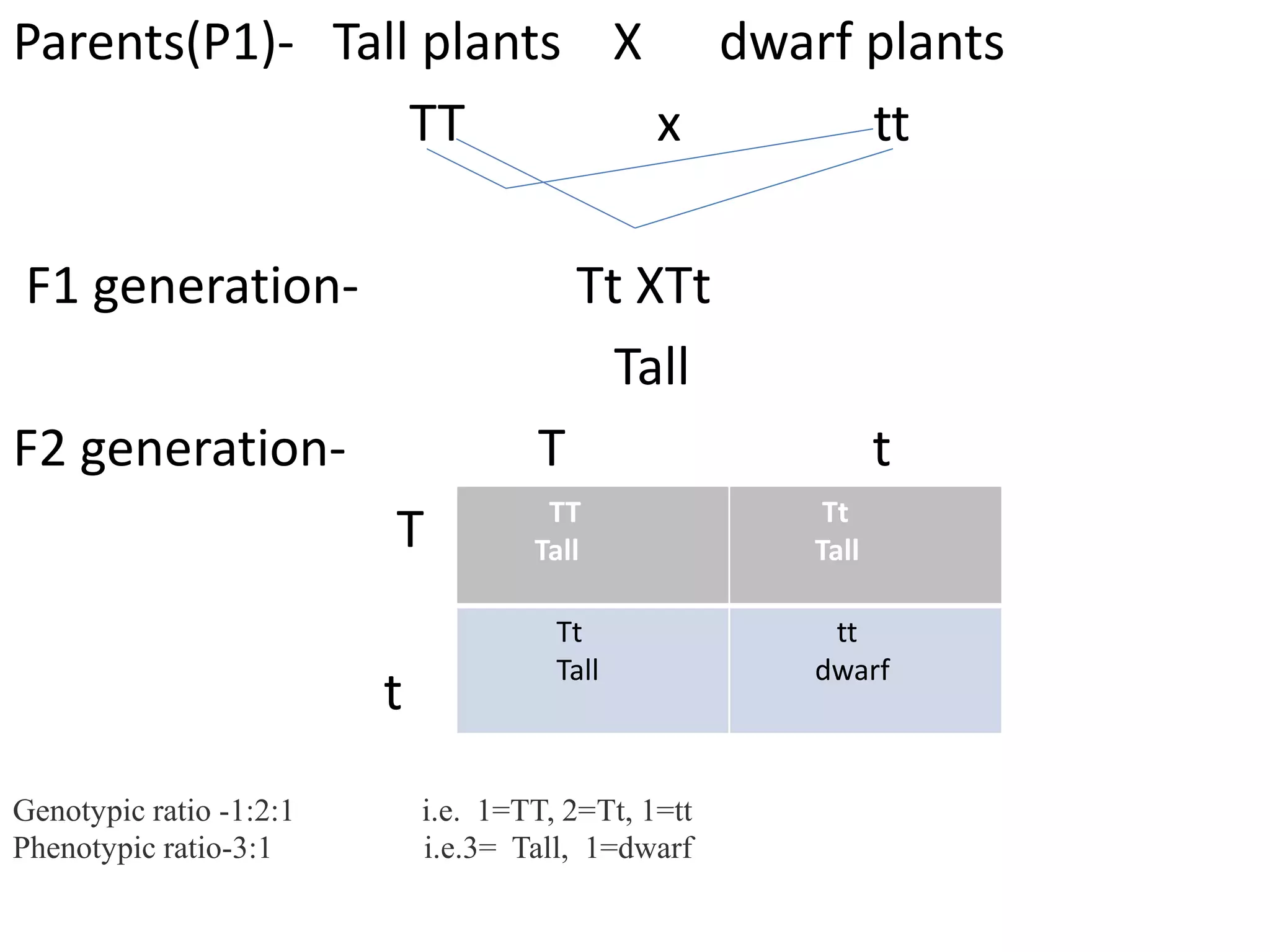1) Gregor Mendel conducted experiments with pea plants between 1856-1863 and established the fundamental laws of inheritance.
2) Through his experiments, he discovered that traits are passed from parents to offspring through discrete units now known as genes, and that dominant genes mask recessive genes.
3) Mendel's work demonstrated that when a tall pea plant is crossed with a dwarf pea plant, the F1 offspring are all tall, with the tall trait dominating, but in the F2 generation both tall and dwarf traits reappear in a 3:1 ratio.














